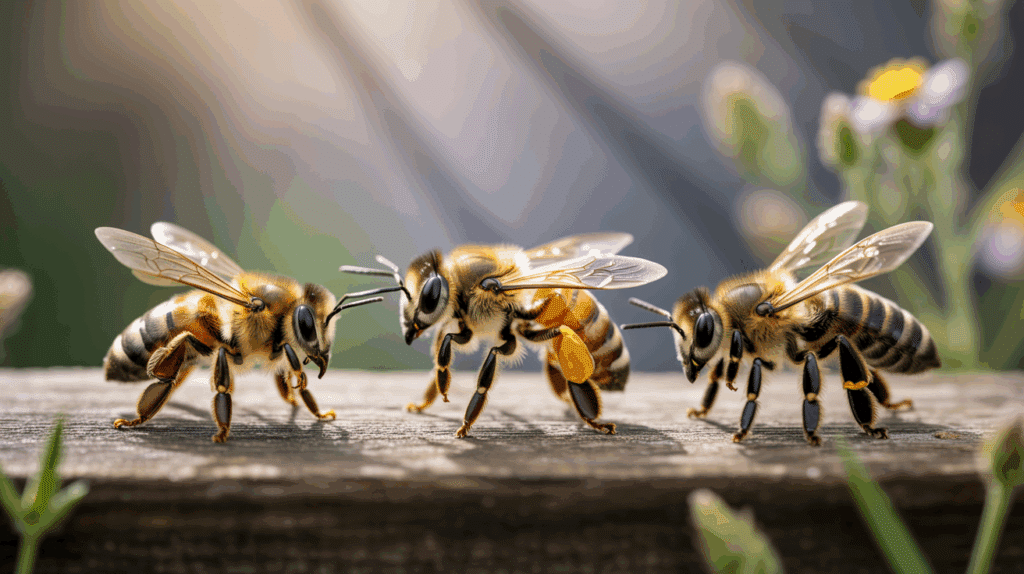Kids often wonder how bees grow and change. The life cycle of a bee for kids is a topic full of fun facts that many young minds find truly interesting.
By studying the life cycle of a bee for kids, children gain helpful knowledge about these important insects. They’ll soon want to know more about the queen, the workers, and the drones that make up the bee family.
Meet and Get to Know the Busy Bee
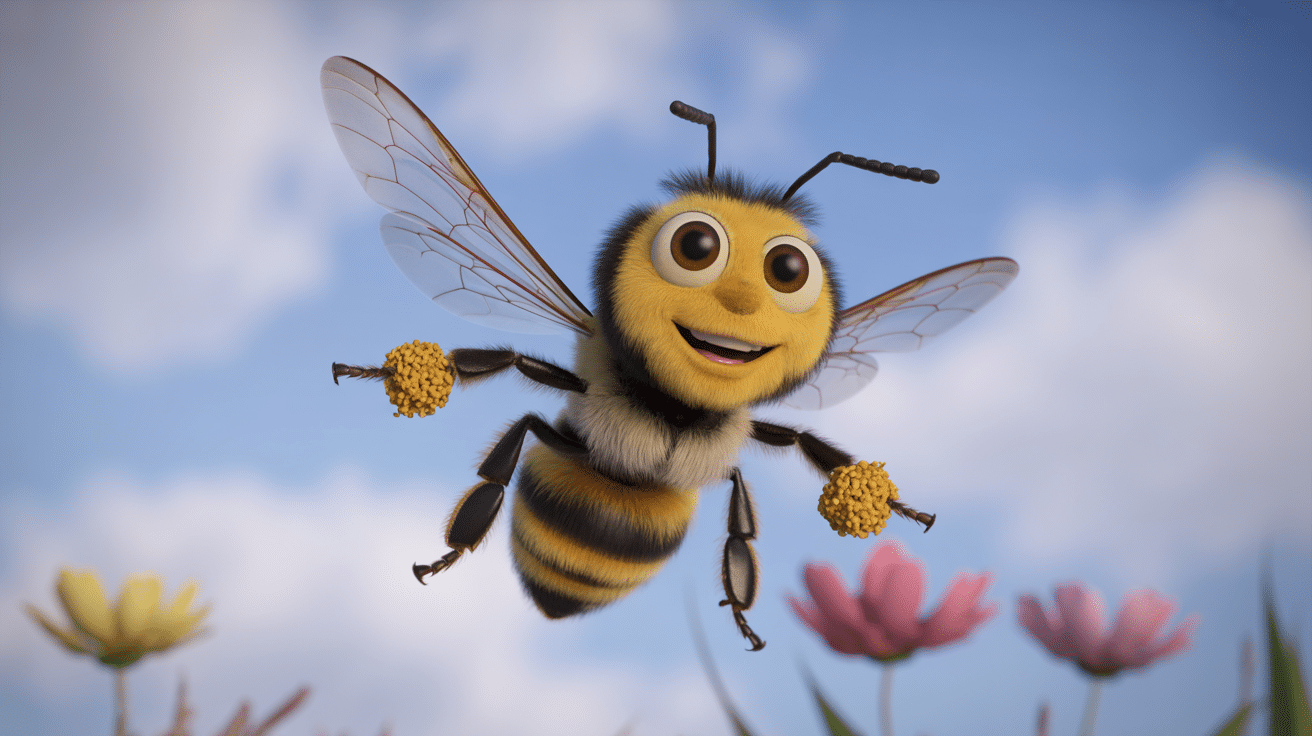
Bees are some of the hardest-working small animals on our planet. When we look at them flying from one flower to the next, they’re actually doing important work!
A honey bee visits about 100 flowers during each trip outside the hive. That’s a lot of stops for such a small friend! These busy flyers don’t just collect food for themselves – they gather extra to bring back to their family.
Bees work as a team, with each one having specific tasks. Some collect pollen, others make honey, and some take care of the baby bees.
The queen bee has the big job of laying eggs – sometimes up to 2,000 in a single day! What makes them even more helpful is how they move pollen between flowers. This helps plants produce fruits and seeds. Without bees, we wouldn’t have many of our favorite foods, such as apples, strawberries, and almonds.
Bees truly earn their “busy” nickname every single day!
Life Cycle of A Bee for Kids
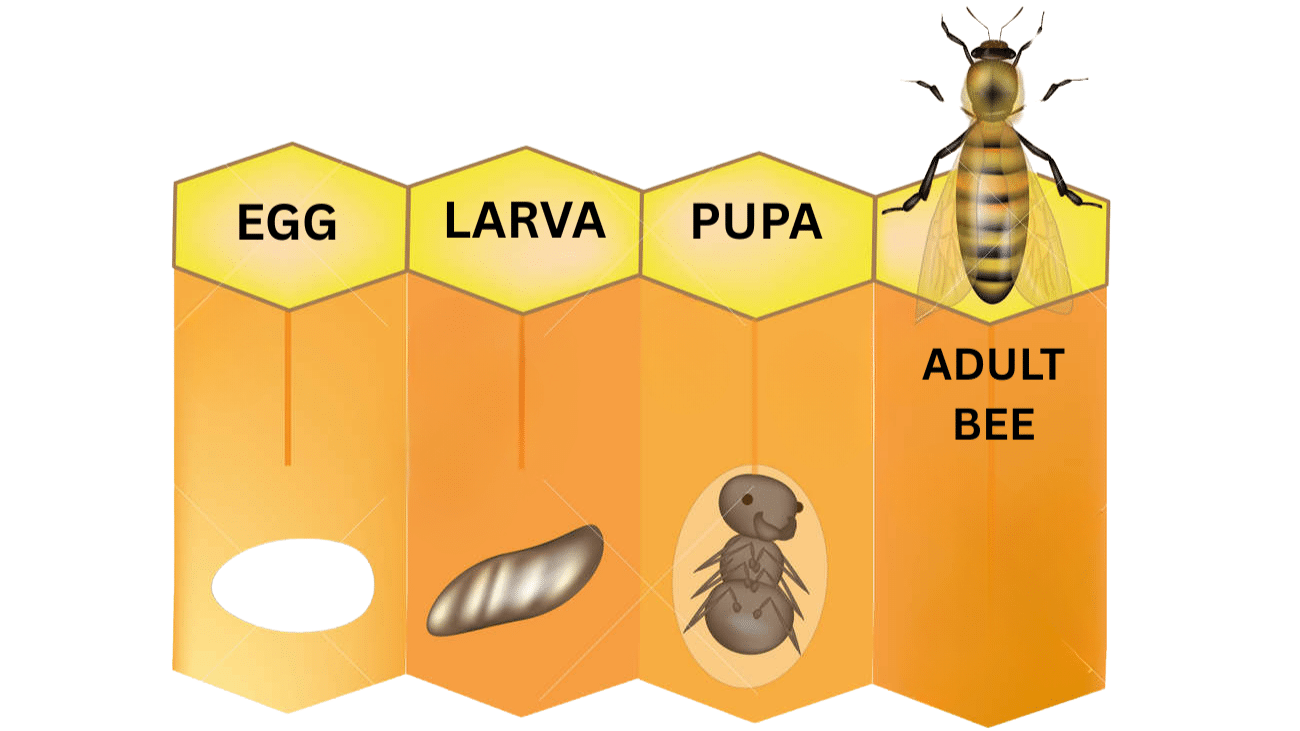
The path of a bee from birth to flight includes both wonders and tests. Finding the right place to start a colony is the first big task for a swarm. They search for spots that keep them safe from rain, wind, and hungry animals.
Let’s follow the amazing steps of the life cycle of a bee for kids that turn a tiny egg into a flying bee!
1. The Tiny Egg – Where It All Starts
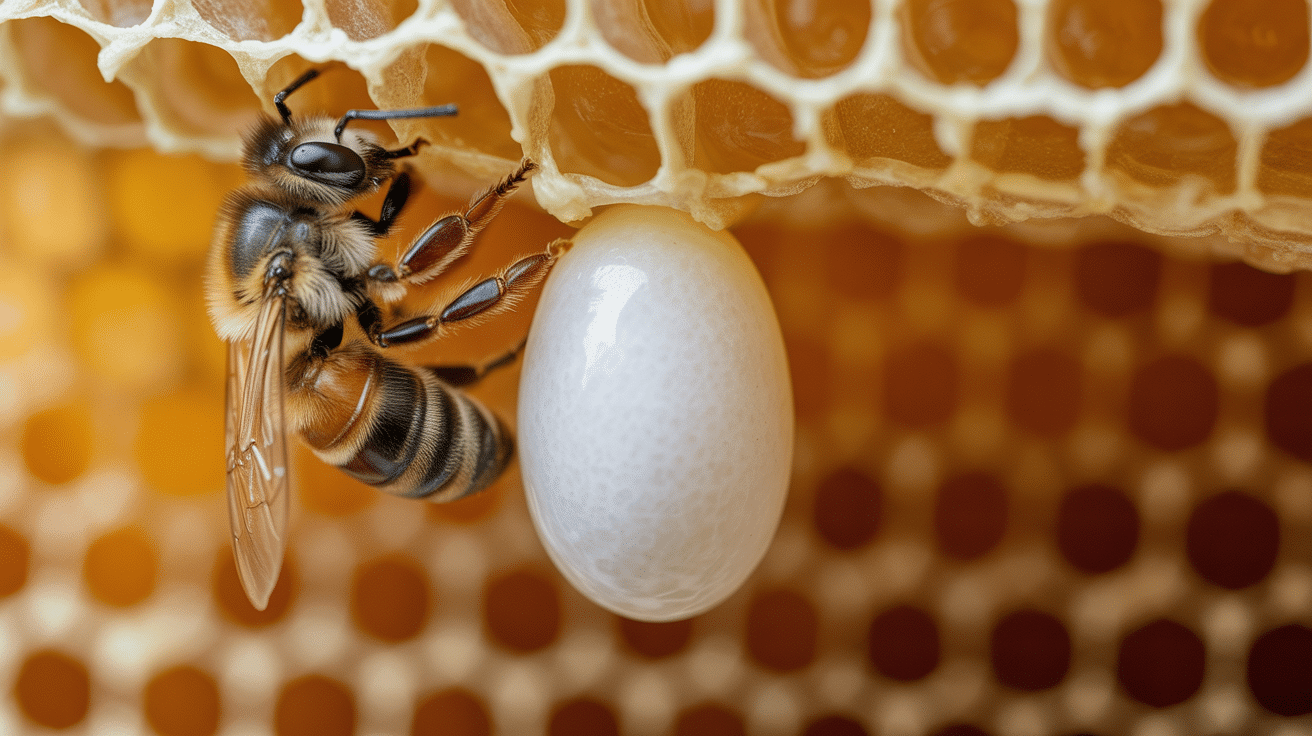
Every bee begins as a small white egg. The queen bee lays each egg inside a special six-sided wax cell.
These eggs are so small you might need a magnifying glass to see them clearly! They look like tiny grains of rice standing up in their cells.
The queen can lay up to 2,000 eggs each day – that’s a lot of baby bees to come!
Fun Fact: A queen bee can control whether she lays female or male eggs! When she releases stored sperm, the egg becomes a female. Without sperm, it becomes a male drone.
2. The Hungry Larva – Eating Machine
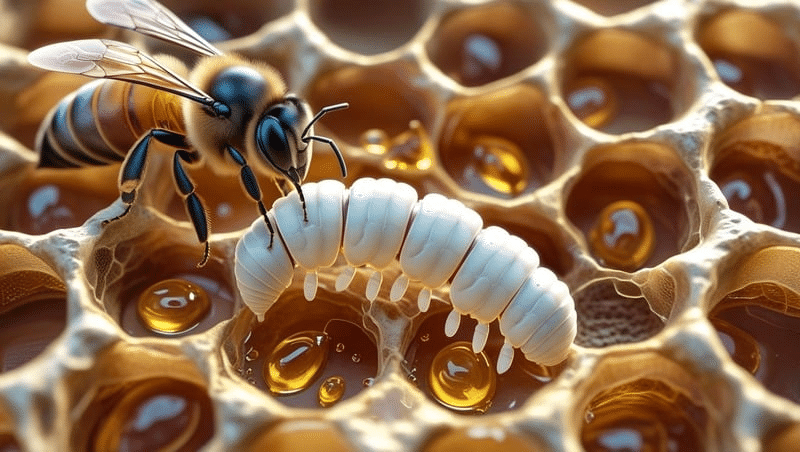
After three days, the egg hatches into a larva. This little white creature looks like a small worm and is very hungry!
Worker bees feed the larvae a special food called “bee bread” (a mix of honey and pollen). The larva eats so much that it grows to 1,500 times its original size in just five days! You can think of this stage as the bee’s childhood; all it does is eat and grow.
3. The Cozy Pupa – Time for Change
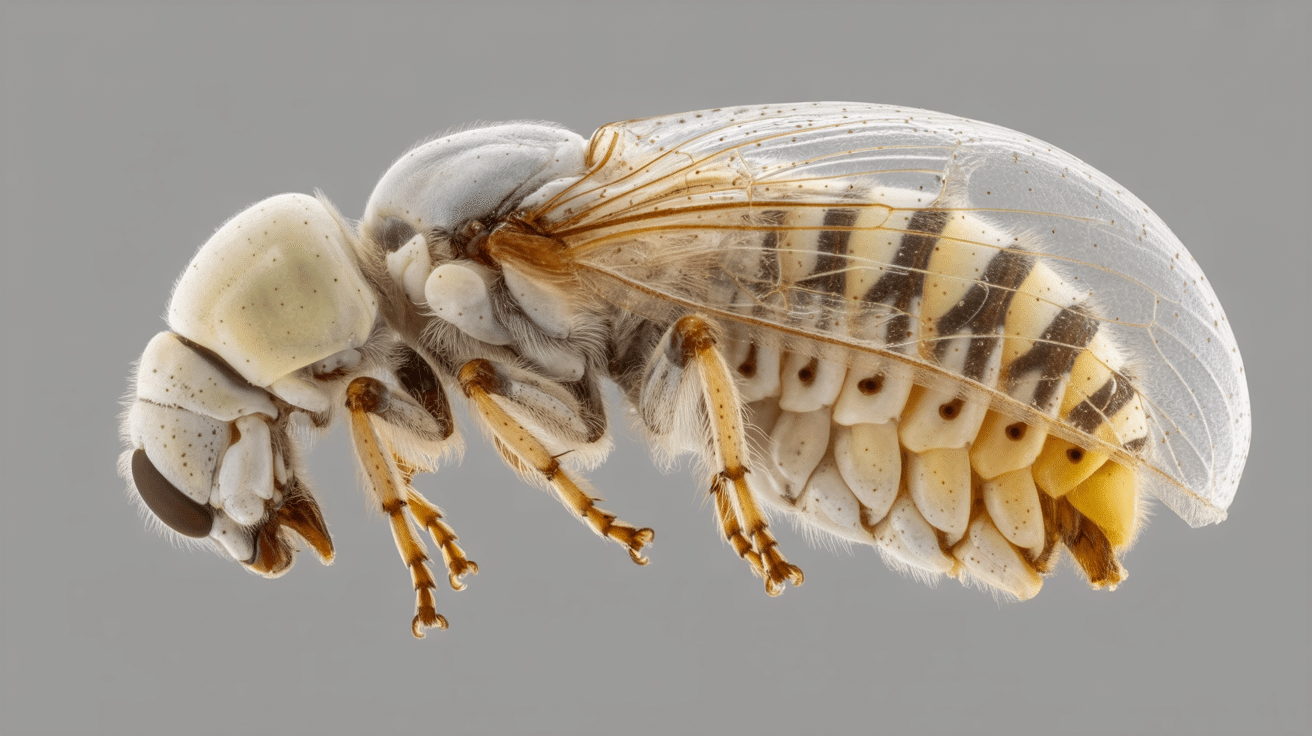
When the larva is big enough, worker bees seal its cell with a wax cap. Inside this cozy room, something magical happens! The larva spins a cocoon around itself and becomes a pupa. During this time, the pupa’s body changes completely. It grows legs, wings, and all the body parts it needs to be a bee.
This is like the bee’s teenage years – lots of changes happening all at once!
Fun Fact: If you look closely at the wax caps on cells, you can tell what’s inside! Honey cells have flat caps, while cells with pupae have caps that stick out a bit.
4. The Adult Bee – Ready to Fly
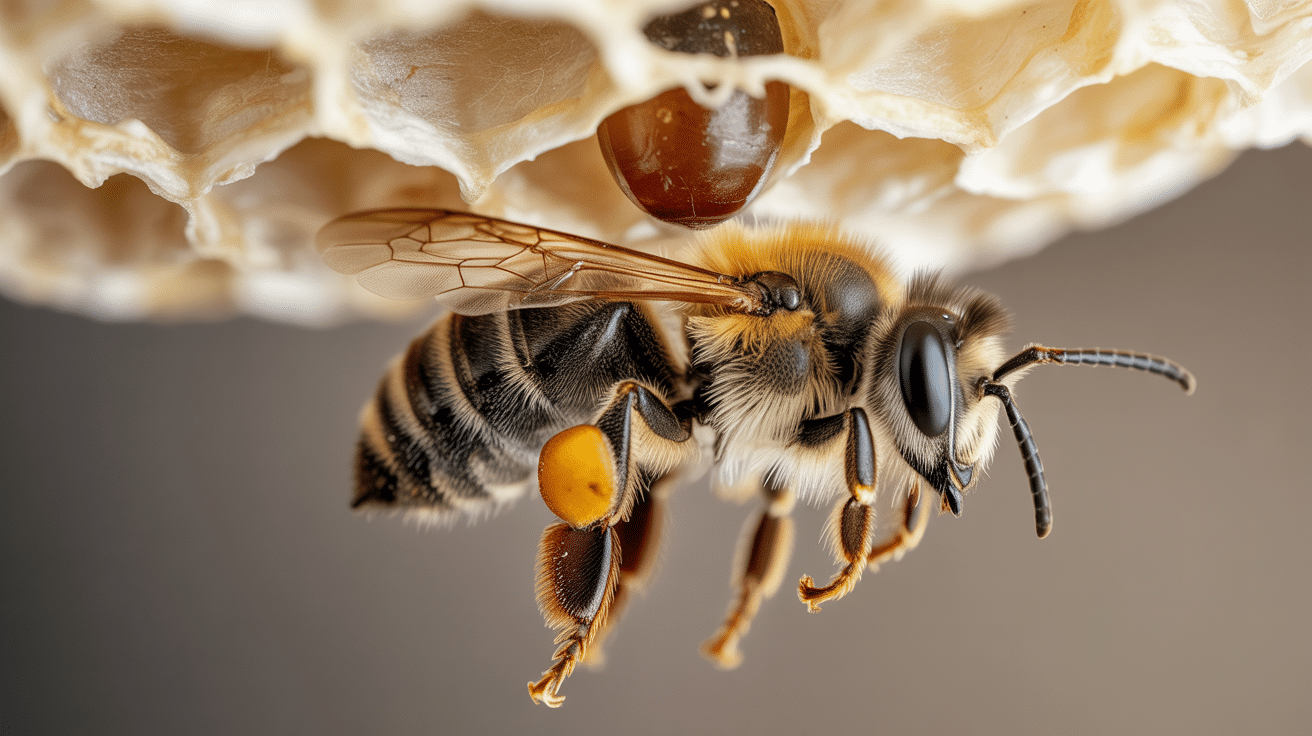
After about 12 days as a pupa (the time varies depending on what type of bee it will be), the fully grown bee chews through the wax cap and comes out!
At first, its body is soft and pale. Within a few hours, its body hardens and gets its yellow and black color.
The new bee starts working right away, cleaning cells or taking care of other eggs. As it gets older, it will do different jobs in the hive before finally flying out to collect pollen and nectar.
Fun Fact: A worker bee might visit between 50-100 flowers on a single trip outside the hive. In its lifetime, one bee makes only about 1/12 of a teaspoon of honey!
You might think this whole process takes a long time, but a worker bee goes from egg to adult in just 21 days! Queen bees develop even faster – in only 16 days.
Buzzing Facts: What Makes Bees Different
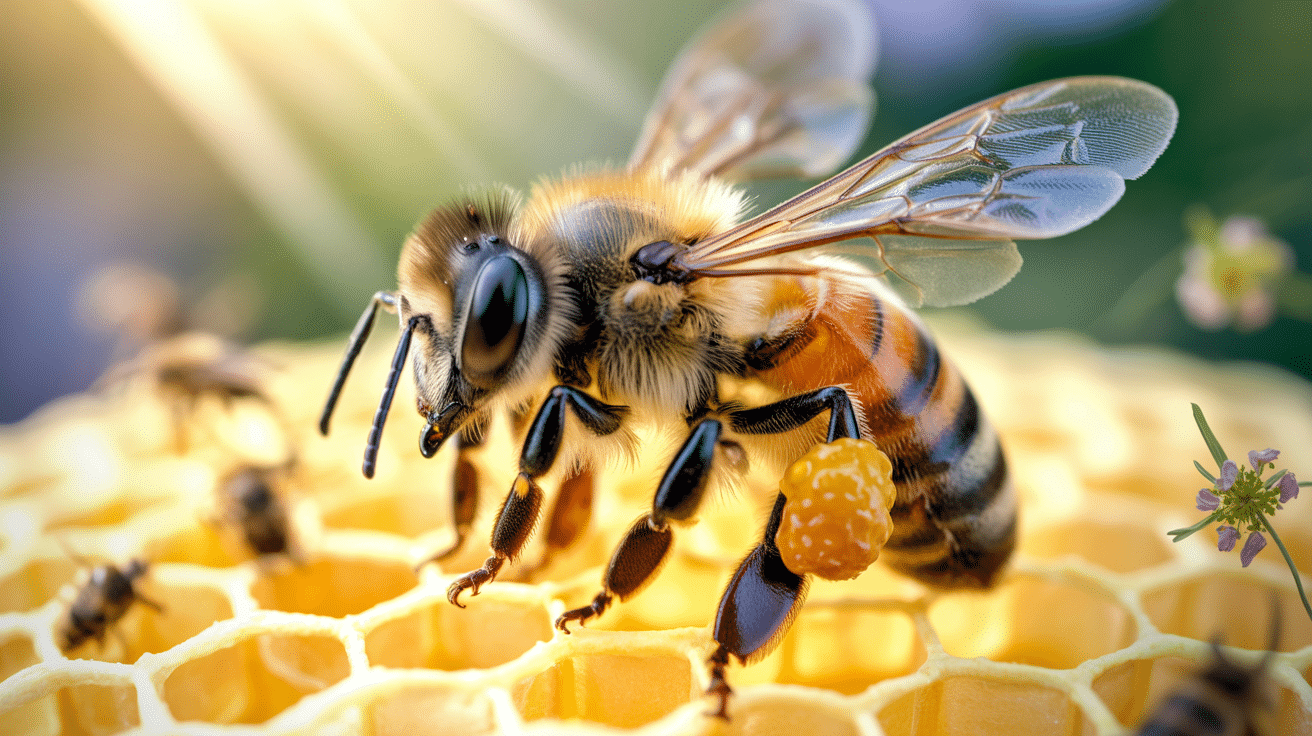
Bees stand out in the insect world for many special traits. These small flyers do big jobs that help both plants and people. Here are some facts that make them truly one of a kind:
- Bees have five eyes – three small ones on top of their head and two big ones in front
- They can see colors humans can’t, including ultraviolet light
- A bee’s wings beat about 200 times per second
- Bees can fly up to 15 miles per hour
- They use a “waggle dance” to tell other bees where to find food
- Bees have special pouches on their legs to carry pollen
- Honey never spoils – pots found in ancient tombs are still good to eat
Meet the Bee Family: Different Bees
The hive buzzes with various bee types, each with unique roles. This family works together to keep their home running smoothly.
| Bee Type | Looks Like | Main Job | Lifespan |
|---|---|---|---|
| Queen | Larger body, longer abdomen | Lays eggs (up to 2,000 daily) | 3-5 years |
| Worker | Medium-sized, has pollen baskets | Collects food, makes honey, and cares for young | 6 weeks (summer), 5 months (winter) |
| Drone | Bigger eyes, bulkier body, no stinger | Mates with new queens | 8 weeks |
| Nurse | Young worker bee | Feeds and cares for larvae | First 1-2 weeks of life |
| Guard | Older worker bee | Protects the hive entrance | Middle part of life |
| Forager | Oldest worker bee | Collects nectar and pollen | Final weeks of life |
Wrapping It Up
The life cycle of a bee for kids shows us how these small insects grow through four amazing stages. From egg to larva, pupa to adult, each step plays a key part in creating these helpful flyers.
Why does this matter? Bees help plants grow, giving us many foods we eat every day.
What’s next? You can help your child plant bee-friendly flowers in your yard. Or make a bee hotel for wild bees to live in. You might even visit a local beekeeper to see these stages up close!


